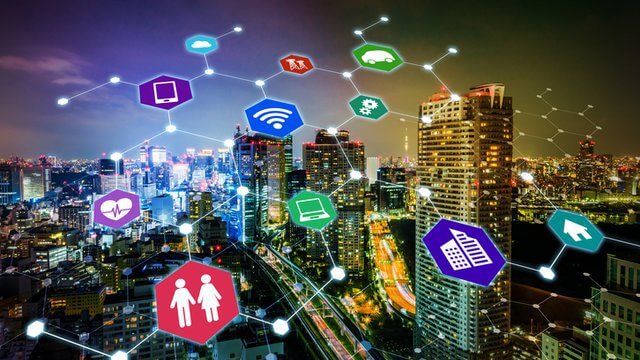The term Smart Cities has become commonplace for people moving in technology sectors. It is thought that by the year 2020, governments will spend about 415,000 million dollars to build them and yet, at times, it is hard for us to imagine how we will live in them.
The idea of ​​integrating advances in technology and data collection to make the IOT become a reality in our cities, is a challenge because it must begin with the implication that the Public Administration will have to prioritize and ensure the most necessary areas.
The companies have already set to work, working with universities and civic planning authorities to develop data-based systems for transportation, waste management, law enforcement and energy use to make them more efficient and improve the life of citizens.
The main pillar of the Smart Cities is the IOT (Internet of Things), since what surrounds us must be connected and interconnected at the same time.
For all this, the generation of data grows exponentially.
In a short time, the world will reach 3.5 devices per person, with the global traffic of the IP protocol growing 22% per year until 2020. Therefore, the growing communication between the devices will generate a 45% growth each year.
We can interact with the services provided by Smart Cities through our smartphones, watches and other wearables. Garbage trucks will be alerted to the location of the garbage they need to collect, and the sensors in the cars will direct us to available parking spaces through global positioning.
With the aim of bringing our cities closer to this new paradigm, the most commonly adopted model to do so is to attract companies that develop software and hardware applications for the Internet of Things, and encourage them to put their ingenuity to create new services.
The Government of Glasgow, Scotland, has contributed with 30 million dollars to make their city more "smarter, safer and more sustainable".
Cities are becoming hybrid compounds of "bits and bricks", united by small, small and powerful. Sooner than you think, we will be surrounded by an invisible "smart dust", it is a large scale of wireless sensors that help the city feel and communicate.
A real example of Smart City.
One of the most well-known and appropriate examples of how Big Data and the IoT will change our conception of the city is Songdo in surcorea.
Songdo is only 65 kilometers from Seoul and 11 kilometers from Incheon International Airport.
The main idea is to convert Songdo into a fully connected city and began to be implemented in 2000, with a projected cost of 36,000 million dollars.
Every inch of the city is tied with broadband fiber optic. Thus, Songdo has impacted the lives of its 65,000 inhabitants and the 300,000 who travel daily to Songdo.
Car traffic is measured and regulated with the help of RFID tags. RFID tags send geographic location data to a central monitoring unit that identifies congested areas.
Traffic measurement also helps the car find the closest available parking lots available. Similarly, through mobile devices, bus drivers can see the positions in real time and receive notifications about which route the bus should follow.
Learn more about the contributions of the Smarts Cities to our society in the post Possible contributions of the Smart Cities.

